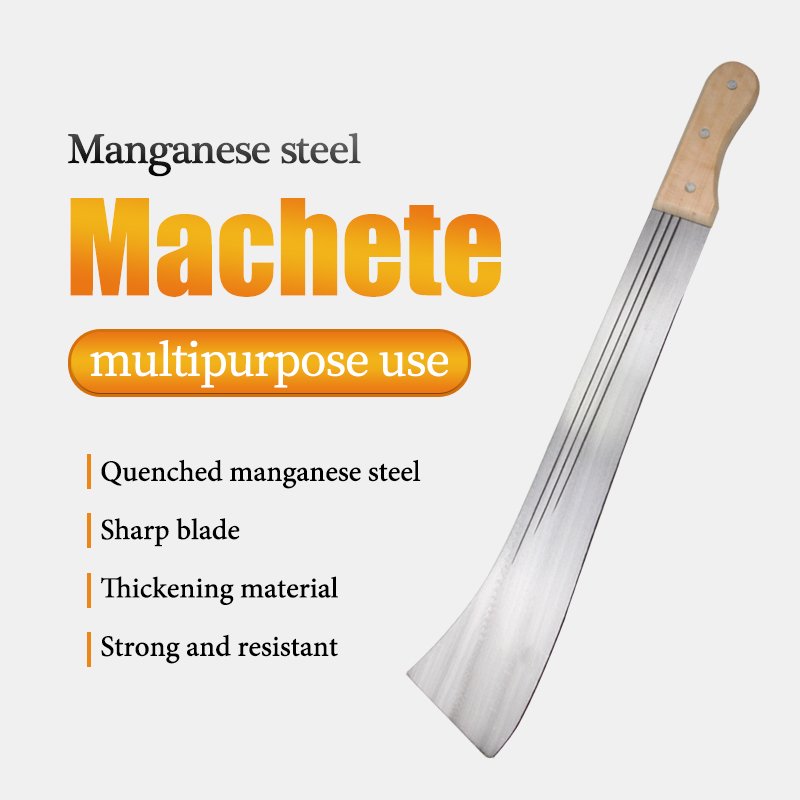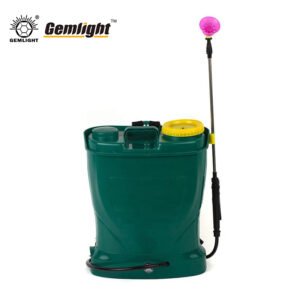Top 8 Different Styles of Machetes for Outdoor Use
Chapter 1: Introduction – Why Machete Styles Matter in Africa
In many regions of Africa, the african machete is more than just a tool—it’s an indispensable part of daily life. From dense forest paths in the Congo to sugarcane farms in Mozambique, different styles of machetes play a critical role in productivity, safety, and efficiency. The terrain and vegetation across Africa are highly varied, and so are the tasks farmers and field workers face. That’s why using the right machete style can significantly influence performance and reduce effort.
Choosing the correct blade design isn’t simply a matter of tradition—it’s about matching the blade geometry, weight, and balance with the job at hand. For instance, the broad and forward-weighted Panga Machete thrives in bush-clearing, while the flat-edged Cane Machete is perfect for precise harvesting. Meanwhile, tools like the Tapanga Machete offer controlled chopping power where precision is crucial.
Understanding these styles ensures field professionals, agricultural cooperatives, and wholesale buyers make informed purchasing decisions. Each machete design carries centuries of local adaptation, refined to suit regional demands. This article explores the top eight machete styles used across Africa, their applications, and how buyers can source high-quality models through trusted suppliers.
Chapter 2: The Panga Machete – Africa’s Classic Cutting Tool
The Panga Machete is arguably the most iconic blade in sub-Saharan Africa. Characterized by its broad blade and curved tip, the Panga is built for power. This tool is widely used across countries such as Kenya, Tanzania, and South Africa, where it is essential for clearing thick vegetation, cutting firewood, and handling farm chores.
Its forward-weighted design delivers powerful chopping force, allowing users to cut through dense brush or small trees with ease. The curved tip can also be used for controlled slicing and skinning, making it a versatile companion for rural users. Its blade typically measures between 16 to 24 inches and is crafted from high-carbon or spring steel to resist wear.
From a manufacturing perspective, durability is key. High-frequency heat treatment and corrosion-resistant coatings extend the life of the blade in humid or tropical environments. The Panga Machete is a preferred choice not only for its cutting efficiency but also for its simplicity and low maintenance.
Distributors and wholesalers looking to supply Panga Machetes to African markets should prioritize ergonomic handle designs, anti-slip grips, and robust sheathing options. Given its wide adoption and cultural familiarity, the Panga continues to be a high-demand product across African agricultural and rural economies.

Chapter 3: Our Factory Solutions – African Machete Styles for Bulk Orders
At our factory, we specialize in producing high-performance machetes tailored specifically for the African market. With decades of experience exporting agricultural blades to Africa, we understand the practical demands of fieldwork, harvest season, and rural industries. Our product line includes the most sought-after machete styles used in Africa: Panga Machetes, Tapanga Machetes, and Cane Machetes.
We offer a full range of Panga Machetes in lengths from 16 to 24 inches, forged from premium high-carbon steel with rust-resistant coatings. These blades are tested in real-world conditions and come with reinforced hardwood or polypropylene handles to endure rugged use.
Our Tapanga Machetes feature a unique angular tip and flat blade edge, ideal for palm plantations and precise bush-cutting operations. Built for regions in West Africa, these tools offer a balance between power and accuracy. We offer OEM services and customization on blade thickness, engraving, and handle branding.
For sugarcane-heavy regions like Zambia and Uganda, we supply Cane Machetes with wide, flat blades designed for clean harvesting and fast swing motion. Their lightweight design and sharp edge reduce labor fatigue, especially during harvest peak season.
We proudly serve clients in Nigeria, Ghana, Cameroon, Kenya, and beyond. With flexible minimum order quantities, fast delivery options, and SGS-certified quality control, our factory is your go-to partner for sourcing reliable machetes for the African market.
Chapter 4: The Tapanga Machete – West African Precision Blade
The Tapanga Machete is a uniquely African blade design, particularly prominent in West African countries like Nigeria, Ghana, and Sierra Leone. It is distinguished by its straight-edged body and abruptly angled tip, which gives it an aggressive, square point. This design is not just aesthetic—it’s purposeful.
The flat edge allows for powerful, controlled chopping, especially useful in environments that require accuracy, such as palm tree plantations or narrow footpaths. The weighted tip adds impact force, making it highly effective in cutting through tough fibers, stalks, or woody brush. It’s favored by farmers who need precision to avoid damaging crops or surrounding plants during maintenance.
Unlike curved machetes, the Tapanga is ideal for users who rely on deliberate strikes rather than swing-based momentum. It also offers greater safety and visibility, as users can better judge the strike angle. In some cases, it’s used for tasks like splitting coconuts or slicing livestock feed blocks.
When selecting a Tapanga Machete for wholesale or retail supply, key factors include a full-tang blade, anti-slip handle materials, and reinforced spine for impact durability. Buyers targeting this segment of the market should consider offering Tapanga blades in both traditional and tactical finishes, appealing to both agricultural users and outdoor enthusiasts.

Chapter 5: The Cane Machete – Essential for Sugarcane Farmers
Sugarcane cultivation is a cornerstone of agricultural economies in countries like Mozambique, Malawi, and Uganda. The Cane Machete is specifically engineered to serve this purpose. Its design features a wide, straight-edged blade with a flat tip, optimized for slicing through tall stalks with speed and minimal resistance.
The effectiveness of the Cane Machete lies in its cutting surface and lightweight structure. Farmers can perform repeated swing motions with reduced fatigue, allowing for faster harvest cycles. The flat tip is also useful for chopping harvested stalks into transportable sections.
Some models come with hooked tips or sharpened backs, adding functionality such as stripping leaves or lifting bundles. For export and supply chains, the demand is often seasonal—especially before regional harvests begin.
We recommend sourcing Cane Machetes with hardened steel edges and anti-corrosion finishes to withstand the often-wet environments of sugarcane fields. Handles made of hardwood or molded plastic ensure comfortable, long-term use. Bulk buyers should also explore blade length variations (typically 14–20 inches) based on regional preferences.
For agri-cooperatives or rural development programs, Cane Machetes offer a practical and low-cost investment with proven results in labor efficiency. As sugarcane remains a high-value crop, the demand for efficient harvesting tools like this machete style continues to grow across the continent

Chapter 6: The Barong Machete – A Rare Find in Central Africa
Although the Barong Machete originates from Southeast Asia, particularly the Philippines, it has made a niche presence in parts of Central Africa, especially among hunters, forest workers, and bushcraft practitioners. Its wide, leaf-shaped blade with a pronounced curve is excellent for powerful chopping and slicing motions, making it a practical solution for clearing trails or handling meat in outdoor environments.
In Congo, Gabon, and the Central African Republic, the Barong-Style Machete has gained attention due to its combination of slicing finesse and raw power. The thick spine of the blade enhances durability, while the widened midsection provides significant momentum during swings. This makes it especially effective for cutting through fibrous vegetation, carving tree bark, or preparing food in camp settings.
From a manufacturing standpoint, this style requires high-grade steel and precision shaping to maintain its weight balance. Compared to traditional African machetes, the Barong-Style offers a hybrid between axe-like strength and sword-like grace.
Distributors interested in this design should consider targeting adventure gear retailers, bushcraft training organizations, or niche agricultural communities. Customization options—such as traditional wooden scabbards or tactical black finishes—can expand its appeal.
Though not as common as the Panga or Tapanga, the Barong-style machete’s growing popularity in specialized sectors reflects the evolution of African outdoor tools, blending global blade knowledge with regional practicality.
Chapter 7: The Colima Machete – Dual-Edged Efficiency
The Colima-Style Machete, originally from Latin America, has slowly been adopted in African agricultural zones that value multifunctional tools. What sets this style apart is its double-edged blade design—one side sharpened for cutting, the other for scraping or chopping. In regions like Cameroon, Angola, and rural parts of Kenya, where users seek efficiency across multiple tasks, the Colima-style proves highly functional.
This machete type is ideal for forestry workers and wood processors who need to clear bark, prune branches, and prepare stakes or fencing. Its long, slender shape allows it to reach tight spots, while the dual-edge concept reduces the need to switch tools during fieldwork.
For African buyers, the Colima-style represents innovation and time-saving. Its increasing adoption in regions with diverse land use patterns—such as mixed farming and agroforestry—is a testament to its adaptability.
Suppliers should focus on blade hardness, consistent sharpening, and safety features, especially given the two-edge configuration. Full-tang construction and rubberized handles can enhance control and reduce injury risks.
Though currently a niche product, the Colima-style machete presents a promising opportunity for agricultural cooperatives, forestry units, and eco-farming programs that value versatile tools with low maintenance requirements.

Chapter 8: The Bowie Machete – Versatility in African Bushcraft
Originally inspired by the iconic Bowie knife, the Bowie Machete merges the utility of a long machete with the tactical features of a combat blade. In East Africa and parts of Zambia, it’s becoming popular among safari guides, bushcraft trainers, and homesteaders who seek an all-in-one survival blade.
Its signature clip-point tip allows for piercing tasks, while the long edge handles chopping, slicing, and even butchering. Unlike the heavy-duty Panga, the Bowie Machete offers more precision and agility, making it suitable for tasks like crafting tools, skinning game, or defending against wild animals.
In markets where bushcraft and outdoor survival are growing in popularity—often influenced by tourism, conservation training, and adventure education—this blade offers excellent market potential. For NGOs or military supply chains in Africa, it serves as a multi-purpose tool ideal for field conditions.
Factory specifications should include heat-treated carbon steel blades, ergonomic grips, and well-balanced blade-to-handle ratios. Tactical versions with sawback spines, paracord-wrapped handles, or MOLLE-compatible sheaths can appeal to younger outdoor users.
As more African consumers adopt outdoor sports and rural self-reliance lifestyles, the Bowie machete is carving a strong identity as a cross-functional blade for both work and survival.
Chapter 9: Choosing the Right Machete Style for Your Region
Selecting the correct machete style is not just about preference—it’s about aligning the blade’s function with the specific conditions of your worksite or target market. In Africa, this means considering local vegetation types, terrain, user habits, and economic factors. A well-matched machete can boost productivity, reduce user fatigue, and even minimize long-term equipment costs.
For dense forest and bushland:
- Panga Machete delivers heavy swings ideal for clearing and wood chopping.
For palm plantations and precision cuts:
- Tapanga Machete offers controlled chopping with a balanced, flat edge.
For sugarcane farms:
- Cane Machete ensures rapid, clean harvest with minimal plant damage.
For versatile applications:
- Bowie and Colima styles add adaptability in multitask environments.
For specialized or cultural preferences:
- Barong-style adds ceremonial and high-impact value for niche users.
Buyers should consider factors like blade length, thickness, steel quality, corrosion resistance, and handle ergonomics. Whether supplying local farmers, cooperatives, or outdoor gear shops, offering a curated range of machete styles with customization options (branding, packaging, engraving) can help build long-term trust and repeat business.
Our factory supports wholesale, private label, and OEM orders, ensuring your customers receive machetes tailored for the African environment—with unmatched durability and practical design.




